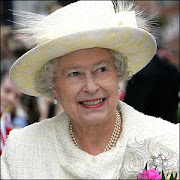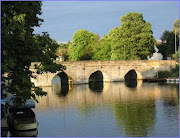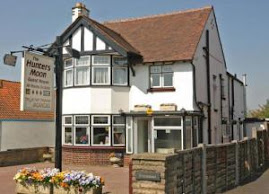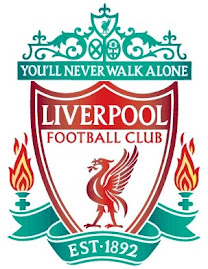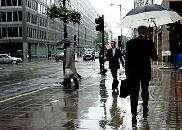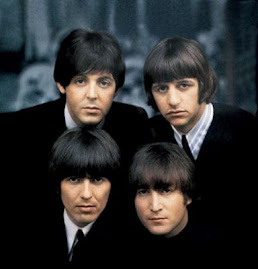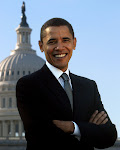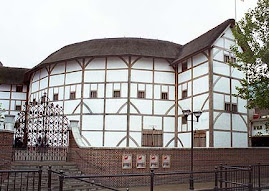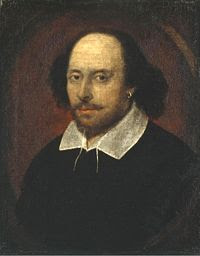It is a bulding.
One part is grey and the other is brown.
You go there every day in the week.
a lot of people hate it.
jueves, 4 de junio de 2009
jueves, 21 de mayo de 2009
STONEHENGE
Stonehenge is a prehistoric monument located in the English county of Wiltshire, about 3.2 kilometres (2.0 mi) west of Amesbury and 13 kilometres (8.1 mi) north of Salisbury. One of the most famous sites in the world, Stonehenge is composed of earthworks surrounding a circular setting of large standing stones and sits at the centre of the densest complex of Neolithic and Bronze Age monuments in Englan d, including several hundred burial mounds. Archaeologists had believed that the iconic stone monument was erected around 2500 BC, as described in the chronology below. However one recent theory has suggested that the first stones were not erected until 2400-2200 BC, whilst another suggests that bluestones may have been erected at the site as early as 3000 BC (see phase 1 below). The surrounding circular earth bank and ditch, which constitute the earliest phase of the monument, have been dated to about 3100 BC. The site and its surroundings were added to the UNESCO's list of World Heritage Sites in 1986 in a co-listing with Avebury henge monument, and it is also a legally protected Scheduled Ancient Monument. Stonehenge itself is owned by the Crown and managed by English Heritage while the surrounding land is owned by the National Trust.
d, including several hundred burial mounds. Archaeologists had believed that the iconic stone monument was erected around 2500 BC, as described in the chronology below. However one recent theory has suggested that the first stones were not erected until 2400-2200 BC, whilst another suggests that bluestones may have been erected at the site as early as 3000 BC (see phase 1 below). The surrounding circular earth bank and ditch, which constitute the earliest phase of the monument, have been dated to about 3100 BC. The site and its surroundings were added to the UNESCO's list of World Heritage Sites in 1986 in a co-listing with Avebury henge monument, and it is also a legally protected Scheduled Ancient Monument. Stonehenge itself is owned by the Crown and managed by English Heritage while the surrounding land is owned by the National Trust.
New archaeological evidence found by the Stonehenge Riverside Project indicates that Stonehenge served as a burial ground from its earliest beginnings.The dating of cremated remains found that burials took place as early as 3000 B.C, when the first ditches were being built around the monument. Burials continued at Stonehenge for at least another 500 years when the giant stones which mark the landmark were put up. According to Professor Mike Parker Pearson, head of Stonehenge Riverside Project:
“
Stonehenge was a place of burial from its beginning to its zenith in the mid third millennium B.C. The cremation burial dating to Stonehenge's sarsen stones phase is likely just one of many from this later period of the monument's use and demonstrates that it was still very much a domain of the dead. ”
Stonehenge is a prehistoric monument located in the English county of Wiltshire, about 3.2 kilometres (2.0 mi) west of Amesbury and 13 kilometres (8.1 mi) north of Salisbury. One of the most famous sites in the world, Stonehenge is composed of earthworks surrounding a circular setting of large standing stones and sits at the centre of the densest complex of Neolithic and Bronze Age monuments in Englan
 d, including several hundred burial mounds. Archaeologists had believed that the iconic stone monument was erected around 2500 BC, as described in the chronology below. However one recent theory has suggested that the first stones were not erected until 2400-2200 BC, whilst another suggests that bluestones may have been erected at the site as early as 3000 BC (see phase 1 below). The surrounding circular earth bank and ditch, which constitute the earliest phase of the monument, have been dated to about 3100 BC. The site and its surroundings were added to the UNESCO's list of World Heritage Sites in 1986 in a co-listing with Avebury henge monument, and it is also a legally protected Scheduled Ancient Monument. Stonehenge itself is owned by the Crown and managed by English Heritage while the surrounding land is owned by the National Trust.
d, including several hundred burial mounds. Archaeologists had believed that the iconic stone monument was erected around 2500 BC, as described in the chronology below. However one recent theory has suggested that the first stones were not erected until 2400-2200 BC, whilst another suggests that bluestones may have been erected at the site as early as 3000 BC (see phase 1 below). The surrounding circular earth bank and ditch, which constitute the earliest phase of the monument, have been dated to about 3100 BC. The site and its surroundings were added to the UNESCO's list of World Heritage Sites in 1986 in a co-listing with Avebury henge monument, and it is also a legally protected Scheduled Ancient Monument. Stonehenge itself is owned by the Crown and managed by English Heritage while the surrounding land is owned by the National Trust.New archaeological evidence found by the Stonehenge Riverside Project indicates that Stonehenge served as a burial ground from its earliest beginnings.The dating of cremated remains found that burials took place as early as 3000 B.C, when the first ditches were being built around the monument. Burials continued at Stonehenge for at least another 500 years when the giant stones which mark the landmark were put up. According to Professor Mike Parker Pearson, head of Stonehenge Riverside Project:
“
Stonehenge was a place of burial from its beginning to its zenith in the mid third millennium B.C. The cremation burial dating to Stonehenge's sarsen stones phase is likely just one of many from this later period of the monument's use and demonstrates that it was still very much a domain of the dead. ”
HADRIAN’S WALL
Hadrian's Wall (Latin: perhaps Vallum Aelium, "the Aelian wall") is a stone and turf fortification built by the Roman Empire across the width of what is now northern England. Begun in AD 122, during the rule of emperor Hadrian, it was the middle of three such fortifications built across Great Britain, the first being from the River Clyde to the River Forth under Agricola and the last the Antonine Wall. All were built to prevent military raids on Roman Britain by the Pictish tribes (ancient inhabitants of Scotland) to the north, to improve economic stability and provide peaceful conditions in Britain, and to mark physically the frontier of the Empire. Hadrian's Wall is the best known of th e three because its physical presence remains most evident today.
e three because its physical presence remains most evident today.
The wall marked the northern limes in Britain and also the most heavily fortified border in the Empire. In addition to its use as a military fortification, it is thought that the gates through the wall would also have served as customs posts to allow trade taxation.
A significant portion of the wall still exists, particularly the mid-section, and for much of its length the wall can be followed on foot. It is the most popular tourist attraction in Northern England, where it is often known simply as the Roman Wall. It was made a UNESCO World Heritage Site in 1987. English Heritage, a government organization in charge of managing the historic environment of England, describes it as "the most important monument built by the Romans in Britain".
Hadrian's Wall (Latin: perhaps Vallum Aelium, "the Aelian wall") is a stone and turf fortification built by the Roman Empire across the width of what is now northern England. Begun in AD 122, during the rule of emperor Hadrian, it was the middle of three such fortifications built across Great Britain, the first being from the River Clyde to the River Forth under Agricola and the last the Antonine Wall. All were built to prevent military raids on Roman Britain by the Pictish tribes (ancient inhabitants of Scotland) to the north, to improve economic stability and provide peaceful conditions in Britain, and to mark physically the frontier of the Empire. Hadrian's Wall is the best known of th
 e three because its physical presence remains most evident today.
e three because its physical presence remains most evident today.The wall marked the northern limes in Britain and also the most heavily fortified border in the Empire. In addition to its use as a military fortification, it is thought that the gates through the wall would also have served as customs posts to allow trade taxation.
A significant portion of the wall still exists, particularly the mid-section, and for much of its length the wall can be followed on foot. It is the most popular tourist attraction in Northern England, where it is often known simply as the Roman Wall. It was made a UNESCO World Heritage Site in 1987. English Heritage, a government organization in charge of managing the historic environment of England, describes it as "the most important monument built by the Romans in Britain".
WILLIAM WALLACE (BRAVE HEART)
William Wallace (Scottish Gaelic: Uilleam Uallas; c. 1270 – 23 August 1305) was a Scottish knight and landowner who is known for leading a resistance during the Wars of Scottish Independence and regarded as a patriot and national hero.[1]
Along with Andrew Moray, he defeated an English army at Sti rling, and became Guardian of Scotland, serving until his defeat at the Battle of Falkirk. After several years in hiding, Wallace was eventually found and captured in Robroyston near Glasgow and handed over to Edward I of England ("Longshanks"), who had him executed for treason.
rling, and became Guardian of Scotland, serving until his defeat at the Battle of Falkirk. After several years in hiding, Wallace was eventually found and captured in Robroyston near Glasgow and handed over to Edward I of England ("Longshanks"), who had him executed for treason.
Wallace was the inspiration for the poem, The Acts and Deeds of Sir William Wallace, Knight of Elderslie, by the 15th-century minstrel, Blind Harry and this poem subsequently became the basis of Randall Wallace's screenplay for the 1995 film Braveheart.
William Wallace (Scottish Gaelic: Uilleam Uallas; c. 1270 – 23 August 1305) was a Scottish knight and landowner who is known for leading a resistance during the Wars of Scottish Independence and regarded as a patriot and national hero.[1]
Along with Andrew Moray, he defeated an English army at Sti
 rling, and became Guardian of Scotland, serving until his defeat at the Battle of Falkirk. After several years in hiding, Wallace was eventually found and captured in Robroyston near Glasgow and handed over to Edward I of England ("Longshanks"), who had him executed for treason.
rling, and became Guardian of Scotland, serving until his defeat at the Battle of Falkirk. After several years in hiding, Wallace was eventually found and captured in Robroyston near Glasgow and handed over to Edward I of England ("Longshanks"), who had him executed for treason.Wallace was the inspiration for the poem, The Acts and Deeds of Sir William Wallace, Knight of Elderslie, by the 15th-century minstrel, Blind Harry and this poem subsequently became the basis of Randall Wallace's screenplay for the 1995 film Braveheart.
MERLIN AND KING ARTHUR LEGEND
Merlin is best known as the wizard featured in the Arthurian legend. The standard depiction of the character first appears in Geoffrey of Monmouth's.jpg) Historia Regum Britanniae, written c.1136, and is based on an amalgamation of previous historical and legendary figures. Geoffrey combined existing stories of Myrddin Wyllt (Merlinus Caledonensis), a North British madman with no connection to King Arthur, with tales of the Romano-British war leader Ambrosius Aurelianus to form the composite figure he called Merlin Ambrosius.
Historia Regum Britanniae, written c.1136, and is based on an amalgamation of previous historical and legendary figures. Geoffrey combined existing stories of Myrddin Wyllt (Merlinus Caledonensis), a North British madman with no connection to King Arthur, with tales of the Romano-British war leader Ambrosius Aurelianus to form the composite figure he called Merlin Ambrosius.
Geoffrey's rendering of the character was immediately popular; later writers expanded the account to produce a fuller image of the wizard. Merlin's traditional biography casts him as born of mortal woman, sired by an incubus, the non-human wellspring from whom he inherits his supernatural powers and abilities. Merlin matures to an ascendant sagehood and engineers the birth of Arthur through magic and intrigue. Later authors have Merlin serve as the king's adviser until he is bewitched and imprisoned by the Lady of the Lake.
Merlin is best known as the wizard featured in the Arthurian legend. The standard depiction of the character first appears in Geoffrey of Monmouth's
.jpg) Historia Regum Britanniae, written c.1136, and is based on an amalgamation of previous historical and legendary figures. Geoffrey combined existing stories of Myrddin Wyllt (Merlinus Caledonensis), a North British madman with no connection to King Arthur, with tales of the Romano-British war leader Ambrosius Aurelianus to form the composite figure he called Merlin Ambrosius.
Historia Regum Britanniae, written c.1136, and is based on an amalgamation of previous historical and legendary figures. Geoffrey combined existing stories of Myrddin Wyllt (Merlinus Caledonensis), a North British madman with no connection to King Arthur, with tales of the Romano-British war leader Ambrosius Aurelianus to form the composite figure he called Merlin Ambrosius.Geoffrey's rendering of the character was immediately popular; later writers expanded the account to produce a fuller image of the wizard. Merlin's traditional biography casts him as born of mortal woman, sired by an incubus, the non-human wellspring from whom he inherits his supernatural powers and abilities. Merlin matures to an ascendant sagehood and engineers the birth of Arthur through magic and intrigue. Later authors have Merlin serve as the king's adviser until he is bewitched and imprisoned by the Lady of the Lake.
EUROPEAN COLONIZATION OF THE AMERICAS
The start of the European colonization of the Americas is typically dated to 1492, although there was at least one earlier colonization effort. The first known Europeans to reach the Americas were the Vikings ("Norse") during the 11th century, who established several colonies in Greenland and one short-lived settlement at L'Anse aux Meadows in the area the Norse called Vinland, present day Newfoundland. Settlements in Greenland survived for several centuries, during which time the Greenland Norse and the Inuit people experienced mostly hostile contact. By the end of the 15th century, the Norse Greenland settlements had collapse.
The first known Europeans to reach the Americas were the Vikings ("Norse") during the 11th century, who established several colonies in Greenland and one short-lived settlement at L'Anse aux Meadows in the area the Norse called Vinland, present day Newfoundland. Settlements in Greenland survived for several centuries, during which time the Greenland Norse and the Inuit people experienced mostly hostile contact. By the end of the 15th century, the Norse Greenland settlements had collapse.
In 1492, a Spanish expedition headed by Christopher Columbus reached the Americas, after which European exploration and colonization rapidly expanded, first through much of the Caribbean Sea region (including the islands of Hispaniola, Puerto Rico and Cuba) and, early in the 16th century, parts of the mainlands of North and South America. Eventually, the entire Western Hemisphere would come under the domination of European nations, leading to profound changes to its landscape, population, and plant and animal life. In the 19th century alone over 50 million people left Europe for the Americas.The post-1492 era is known as the period of the Columbian Exchange.
The start of the European colonization of the Americas is typically dated to 1492, although there was at least one earlier colonization effort.
 The first known Europeans to reach the Americas were the Vikings ("Norse") during the 11th century, who established several colonies in Greenland and one short-lived settlement at L'Anse aux Meadows in the area the Norse called Vinland, present day Newfoundland. Settlements in Greenland survived for several centuries, during which time the Greenland Norse and the Inuit people experienced mostly hostile contact. By the end of the 15th century, the Norse Greenland settlements had collapse.
The first known Europeans to reach the Americas were the Vikings ("Norse") during the 11th century, who established several colonies in Greenland and one short-lived settlement at L'Anse aux Meadows in the area the Norse called Vinland, present day Newfoundland. Settlements in Greenland survived for several centuries, during which time the Greenland Norse and the Inuit people experienced mostly hostile contact. By the end of the 15th century, the Norse Greenland settlements had collapse.In 1492, a Spanish expedition headed by Christopher Columbus reached the Americas, after which European exploration and colonization rapidly expanded, first through much of the Caribbean Sea region (including the islands of Hispaniola, Puerto Rico and Cuba) and, early in the 16th century, parts of the mainlands of North and South America. Eventually, the entire Western Hemisphere would come under the domination of European nations, leading to profound changes to its landscape, population, and plant and animal life. In the 19th century alone over 50 million people left Europe for the Americas.The post-1492 era is known as the period of the Columbian Exchange.
ROBIND HOOD
Is an archetypal figure in English folklore, whose story originates from medieval times, but who remains significant in popular culture where he is known for "robbing the rich to give to the poor" and fighting against injustice and tyranny.
In popular culture, Robin Hood and his band are usually portrayed as living in Sherwood Forest, in Nottinghamshire
The oldest references to Robin Hood are not historical records, or even ballads recounting his exploits, but hints and allusions found in various works
A popular culture Robin Hood is typically seen as a contemporary and supporter of the late-12 th century king Richard the Lionheart, Robin being driven to outlawry during the misrule of Richard's evil brother John while Richard was away at the Third Crusade. This view first gained currency in the 16th century and has very little scholarly support.[10] It is certainly not supported by the earliest ballads. The early compilation A Gest of Robyn Hode names the king as "Edward", and while it does show Robin Hood as accepting the king's pardon he later repudiates it and returns to the greenwood. The oldest surviving ballad, Robin Hood and the Monk gives even less support to the picture of Robin Hood as a partisan of the true king. The setting of the early ballads is usually attributed by scholars to either the 13th century or the 14th, although it is recognised they are not necessarily historically consistent.
th century king Richard the Lionheart, Robin being driven to outlawry during the misrule of Richard's evil brother John while Richard was away at the Third Crusade. This view first gained currency in the 16th century and has very little scholarly support.[10] It is certainly not supported by the earliest ballads. The early compilation A Gest of Robyn Hode names the king as "Edward", and while it does show Robin Hood as accepting the king's pardon he later repudiates it and returns to the greenwood. The oldest surviving ballad, Robin Hood and the Monk gives even less support to the picture of Robin Hood as a partisan of the true king. The setting of the early ballads is usually attributed by scholars to either the 13th century or the 14th, although it is recognised they are not necessarily historically consistent.
The early ballads are also quite clear on Robin Hood's social status, he is a yeoman. While the precise meaning of this term changed over time, including free retainers of an aristocrat and small landholders, it always referred to commoners. The essence of it in the present context was "neither a knight nor a peasant or 'husbonde' but something in between". We know that artisans (such as millers) were among those regarded as "yeomen" in the 14th century. From the 16th century on there were attempts to elevate Robin Hood to the nobility and in two extremely influential plays Anthony Munday presented him at the very end of the 16th century as the Earl of Huntingdon, as he is still commonly presented in modern times.
As well as ballads, the legend was also transmitted by "Robin Hood games" or plays that were an important part of the late medieval and early modern May Day festivities. The first record of a Robin Hood game was in 1426 in Exeter but the reference does not indicate how old or widespread this custom was at the time. The Robin Hood games are known to have flourished in the later 15th and the 16th centuries. It is commonly stated as fact that Maid Marian and a jolly friar (at least partly identifiable with Friar Tuck) entered the legend through the May Games.
Is an archetypal figure in English folklore, whose story originates from medieval times, but who remains significant in popular culture where he is known for "robbing the rich to give to the poor" and fighting against injustice and tyranny.
In popular culture, Robin Hood and his band are usually portrayed as living in Sherwood Forest, in Nottinghamshire
The oldest references to Robin Hood are not historical records, or even ballads recounting his exploits, but hints and allusions found in various works
A popular culture Robin Hood is typically seen as a contemporary and supporter of the late-12
 th century king Richard the Lionheart, Robin being driven to outlawry during the misrule of Richard's evil brother John while Richard was away at the Third Crusade. This view first gained currency in the 16th century and has very little scholarly support.[10] It is certainly not supported by the earliest ballads. The early compilation A Gest of Robyn Hode names the king as "Edward", and while it does show Robin Hood as accepting the king's pardon he later repudiates it and returns to the greenwood. The oldest surviving ballad, Robin Hood and the Monk gives even less support to the picture of Robin Hood as a partisan of the true king. The setting of the early ballads is usually attributed by scholars to either the 13th century or the 14th, although it is recognised they are not necessarily historically consistent.
th century king Richard the Lionheart, Robin being driven to outlawry during the misrule of Richard's evil brother John while Richard was away at the Third Crusade. This view first gained currency in the 16th century and has very little scholarly support.[10] It is certainly not supported by the earliest ballads. The early compilation A Gest of Robyn Hode names the king as "Edward", and while it does show Robin Hood as accepting the king's pardon he later repudiates it and returns to the greenwood. The oldest surviving ballad, Robin Hood and the Monk gives even less support to the picture of Robin Hood as a partisan of the true king. The setting of the early ballads is usually attributed by scholars to either the 13th century or the 14th, although it is recognised they are not necessarily historically consistent.The early ballads are also quite clear on Robin Hood's social status, he is a yeoman. While the precise meaning of this term changed over time, including free retainers of an aristocrat and small landholders, it always referred to commoners. The essence of it in the present context was "neither a knight nor a peasant or 'husbonde' but something in between". We know that artisans (such as millers) were among those regarded as "yeomen" in the 14th century. From the 16th century on there were attempts to elevate Robin Hood to the nobility and in two extremely influential plays Anthony Munday presented him at the very end of the 16th century as the Earl of Huntingdon, as he is still commonly presented in modern times.
As well as ballads, the legend was also transmitted by "Robin Hood games" or plays that were an important part of the late medieval and early modern May Day festivities. The first record of a Robin Hood game was in 1426 in Exeter but the reference does not indicate how old or widespread this custom was at the time. The Robin Hood games are known to have flourished in the later 15th and the 16th centuries. It is commonly stated as fact that Maid Marian and a jolly friar (at least partly identifiable with Friar Tuck) entered the legend through the May Games.
SHAKESPEARE:
William Shakespeare (26 April 1564 – 23 April 1616) was an English poet and playwright, widely regarded as the greatest writer in the English language and the world's preeminent dramatist. He is often called England's national poet and the "Bard of Avon" (or simply "The Bard"). His surviving works consist of 38 plays, 154 sonnets, two long narrative poems, and several other poems. His plays have been translated into every major living language and are performed more often than those of any other playwright.
Shakespeare was born and raised in Stratford-upon-Avon. At the age of 18, he married Anne Hathaway, who bore him three children: Susanna, and twins Hamnet and Judith. Between 1585 and 1592, he began a successful career in London as an actor, writer, and part owner of a playing company ca lled the Lord Chamberlain's Men, later known as the King's Men. He appears to have retired to Stratford around 1613, where he died three years later. Few records of Shakespeare's private life survive, and there has been considerable speculation about such matters as his physical appearance, sexuality, religious beliefs, and whether the works attributed to him were written by others.
lled the Lord Chamberlain's Men, later known as the King's Men. He appears to have retired to Stratford around 1613, where he died three years later. Few records of Shakespeare's private life survive, and there has been considerable speculation about such matters as his physical appearance, sexuality, religious beliefs, and whether the works attributed to him were written by others.
Shakespeare produced most of his known work between 1590 and 1613. His early plays were mainly comedies and histories, genres he raised to the peak of sophistication and artistry by the end of the sixteenth century. He then wrote mainly tragedies until about 1608, including Hamlet, King Lear, and Macbeth, considered some of the finest works in the English language. In his last phase, he wrote tragicomedies, also known as romances, and collaborated with other playwrights. Many of his plays were published in editions of varying quality and accuracy during his lifetime. In 1623, two of his former theatrical colleagues published the First Folio, a collected edition of his dramatic works that included all but two of the plays now recognised as Shakespeare's.
Shakespeare was a respected poet and playwright in his own day, but his reputation did not rise to its present heights until the nineteenth century. The Romantics, in particular, acclaimed Shakespeare's genius, and the Victorians hero-worshipped Shakespeare with a reverence that George Bernard Shaw called "bardolatry".In the twentieth century, his work was repeatedly adopted and rediscovered by new movements in scholarship and performance. His plays remain highly popular today and are constantly studied, performed and reinterpreted in diverse cultural and political contexts throughout the world.
Shakespeare was born and raised in Stratford-upon-Avon. At the age of 18, he married Anne Hathaway, who bore him three children: Susanna, and twins Hamnet and Judith. Between 1585 and 1592, he began a successful career in London as an actor, writer, and part owner of a playing company ca
 lled the Lord Chamberlain's Men, later known as the King's Men. He appears to have retired to Stratford around 1613, where he died three years later. Few records of Shakespeare's private life survive, and there has been considerable speculation about such matters as his physical appearance, sexuality, religious beliefs, and whether the works attributed to him were written by others.
lled the Lord Chamberlain's Men, later known as the King's Men. He appears to have retired to Stratford around 1613, where he died three years later. Few records of Shakespeare's private life survive, and there has been considerable speculation about such matters as his physical appearance, sexuality, religious beliefs, and whether the works attributed to him were written by others.Shakespeare produced most of his known work between 1590 and 1613. His early plays were mainly comedies and histories, genres he raised to the peak of sophistication and artistry by the end of the sixteenth century. He then wrote mainly tragedies until about 1608, including Hamlet, King Lear, and Macbeth, considered some of the finest works in the English language. In his last phase, he wrote tragicomedies, also known as romances, and collaborated with other playwrights. Many of his plays were published in editions of varying quality and accuracy during his lifetime. In 1623, two of his former theatrical colleagues published the First Folio, a collected edition of his dramatic works that included all but two of the plays now recognised as Shakespeare's.
Shakespeare was a respected poet and playwright in his own day, but his reputation did not rise to its present heights until the nineteenth century. The Romantics, in particular, acclaimed Shakespeare's genius, and the Victorians hero-worshipped Shakespeare with a reverence that George Bernard Shaw called "bardolatry".In the twentieth century, his work was repeatedly adopted and rediscovered by new movements in scholarship and performance. His plays remain highly popular today and are constantly studied, performed and reinterpreted in diverse cultural and political contexts throughout the world.
IRISH REBELLION 
the Irish Rebellion of 1798, as it is known locally, was an uprising in 1798, lasting several months, against the Kingdom of Britain and its subject Kingdom of Ireland. The latter had a degree of autonomy but bore allegiance to George III of Great Britain. The United Irishmen, a republican revolutionary group influenced by the ideas of the American and French Revolutions, were the main organising force behind the rebellion.

the Irish Rebellion of 1798, as it is known locally, was an uprising in 1798, lasting several months, against the Kingdom of Britain and its subject Kingdom of Ireland. The latter had a degree of autonomy but bore allegiance to George III of Great Britain. The United Irishmen, a republican revolutionary group influenced by the ideas of the American and French Revolutions, were the main organising force behind the rebellion.
CHARLES DICKENS
Oliver Twist (1838) is Charles Dickens' second novel. The book was originally published in Bentley's Miscellany as a serial, in monthly installments that began appearing in the month of February 1837 and continued through April 1839, originally intended to form part of Dickens' serial The Mudfog Papers. George Cruikshank provided one steel etching per month to illustrate each installment.
Oliver Twist is the first novel in the English language to centre throughout on a child protag onist and is also notable for Dickens' unromantic portrayal of criminals and their sordid lives. The book's subtitle, The Parish Boy's Progress alludes to Bunyan's The Pilgrim's Progress and also to a pair of popular 18th-century caricature series by William Hogarth, "A Rake's Progress" and "A Harlot's Progress".
onist and is also notable for Dickens' unromantic portrayal of criminals and their sordid lives. The book's subtitle, The Parish Boy's Progress alludes to Bunyan's The Pilgrim's Progress and also to a pair of popular 18th-century caricature series by William Hogarth, "A Rake's Progress" and "A Harlot's Progress".
An early example of the social novel, the book calls the public's attention to various contemporary social evils, including the Poor Law that states that poor people should work in workhouses, child labour and the recruitment of children as criminals. Dickens mocks the hypocrisies of the time by surrounding the novel's serious themes with sarcasm and dark humour. The novel may have been inspired by the story of Robert Blincoe, an orphan whose account of his hardships as a child labourer in a cotton mill was widely read in the 1830s.
Oliver Twist has been the subject of numerous film and television adaptations, and is the basis for a highly successful musical, Oliver!. This novel is loved by people around the world, while the book itself is now translated into more than 25 languages .
Oliver Twist is the first novel in the English language to centre throughout on a child protag
 onist and is also notable for Dickens' unromantic portrayal of criminals and their sordid lives. The book's subtitle, The Parish Boy's Progress alludes to Bunyan's The Pilgrim's Progress and also to a pair of popular 18th-century caricature series by William Hogarth, "A Rake's Progress" and "A Harlot's Progress".
onist and is also notable for Dickens' unromantic portrayal of criminals and their sordid lives. The book's subtitle, The Parish Boy's Progress alludes to Bunyan's The Pilgrim's Progress and also to a pair of popular 18th-century caricature series by William Hogarth, "A Rake's Progress" and "A Harlot's Progress".An early example of the social novel, the book calls the public's attention to various contemporary social evils, including the Poor Law that states that poor people should work in workhouses, child labour and the recruitment of children as criminals. Dickens mocks the hypocrisies of the time by surrounding the novel's serious themes with sarcasm and dark humour. The novel may have been inspired by the story of Robert Blincoe, an orphan whose account of his hardships as a child labourer in a cotton mill was widely read in the 1830s.
Oliver Twist has been the subject of numerous film and television adaptations, and is the basis for a highly successful musical, Oliver!. This novel is loved by people around the world, while the book itself is now translated into more than 25 languages .
The Industrial Revolution was a period in the late 18th and ea rly 19th centuries when major changes in agriculture, manufacturing, production, mining, and transportation had a profound effect on the socioeconomic and cultural conditions in Britain. The changes subsequently spread throughout Europe, North America, and eventually the world. The onset of the Industrial Revolution marked a major turning point in human society; almost every aspect of daily life was eventually influenced in some way.Starting in the latter part of the 18th century there began a transition in parts of Great Britain's previously manual labour–based economy .
rly 19th centuries when major changes in agriculture, manufacturing, production, mining, and transportation had a profound effect on the socioeconomic and cultural conditions in Britain. The changes subsequently spread throughout Europe, North America, and eventually the world. The onset of the Industrial Revolution marked a major turning point in human society; almost every aspect of daily life was eventually influenced in some way.Starting in the latter part of the 18th century there began a transition in parts of Great Britain's previously manual labour–based economy .
 rly 19th centuries when major changes in agriculture, manufacturing, production, mining, and transportation had a profound effect on the socioeconomic and cultural conditions in Britain. The changes subsequently spread throughout Europe, North America, and eventually the world. The onset of the Industrial Revolution marked a major turning point in human society; almost every aspect of daily life was eventually influenced in some way.Starting in the latter part of the 18th century there began a transition in parts of Great Britain's previously manual labour–based economy .
rly 19th centuries when major changes in agriculture, manufacturing, production, mining, and transportation had a profound effect on the socioeconomic and cultural conditions in Britain. The changes subsequently spread throughout Europe, North America, and eventually the world. The onset of the Industrial Revolution marked a major turning point in human society; almost every aspect of daily life was eventually influenced in some way.Starting in the latter part of the 18th century there began a transition in parts of Great Britain's previously manual labour–based economy .towards machine-based manufacturing. It started with the mechanisation of the textile industries, the development of iron-making techniques and the increased use of refined coal. Trade expansion was enabled by the introduction of canals, improved roads and railways. The introduction of steam power fuelled primarily by coal, wider utilization of water wheels and powered machinery (mainly in textile manufacturing) underpinned the dramatic increases in production capacity. The development of all-metal machine tools in the first two decades of the 19th century facilitated the manufacture of more production machines for manufacturing in other industries. The effects spread throughout Western Europe and North America during the 19th century, eventually affecting most of the world. The impact of this change on society was enormous. The First Industrial Revolution, which began in the 18th century, merged into the Second Industrial Revolution around 1850, when technological and economic progress gained momentum with the development of steam-powered ships, railways, and later in the 19th century with the internal combustion engine and electrical power generation. The period of time covered by the Industrial Revolution varies with different historians. Eric Hobsbawm held that it 'broke out' in Britain in the 1780s and was not fully felt until the 1830s or 1840s,[4] while T. S. Ashton held that it occurred roughly between 1760 and 1830.[5] Some twentieth century historians such as John Clapham and Nicholas Crafts have argued that the process of economic and social change took place gradually and the term revolution is not a true description of what took place. This is still a subject of debate amongst historians. GDP per capita was broadly stable before the Industrial Revolution in and the emergence of the modern capitalist economy. The Industrial Revolution began an era of per-capita economic growth in capitalist economies. Historians agree that the Industrial Revolution was one of the most important events in history. The most significant inventions had their origins in the Western world, primarily Europe and the United States.
The Commonwealth of Nations, also known as the Commonwealth or the British Commonwealth, is an intergovernmental organisation of fifty-three independent member states. Most of them were formerly parts of the British Empire. They co-operate within a framework of common values and goals, as outlined in the Singapore Declaration.[1] These include the promotion of democracy, human rights, good governance, the rule of law, individual liberty, egalitarianism, free trade, multilateralism, and world peace.[2]
The Commonwealth is not a political union, but an intergovernmental organisation through which countries with diverse social, political, and economic backgrounds are regarded as equal in status. Its activities are carried out through the permanent Commonwealth Secretariat, headed by the Secretary-General; biennial Meetings between Commonwealth Heads of Government; and the Commonwealth Foundation, which facilitates activities of non-governmental organisations in the so-called 'Commonwealth Family'. The symbol of this free association is the Head of the Commonwealth, which is a ceremonial position currently held by Queen Elizabeth II.
Elizabeth II is also the monarch, separately, of sixteen members of the Commonwealth, collectively called the Commonwealth realms. As each realm is an independent kingdom, Elizabeth II, as monarch, holds a distinct title for each, though, by a Prime Ministers' Conference in 1952, all include the style Head of the Commonwealth at the end; for example: Elizabeth the Second, by the Grace of God, Queen of Australia and of Her other Realms and Territories, Head of the Commonwealth. Beyond the realms, the majority of the members of the Commonwealth have separate heads of state: thirty-two members are republics, and five members have distinct monarchs: the Sultan of Brunei; the King of Lesotho; the Yang di-Pertuan Agong (or King) of Malaysia; the King of Swaziland; and the King of Tonga.
The Commonwealth is not a political union, but an intergovernmental organisation through which countries with diverse social, political, and economic backgrounds are regarded as equal in status. Its activities are carried out through the permanent Commonwealth Secretariat, headed by the Secretary-General; biennial Meetings between Commonwealth Heads of Government; and the Commonwealth Foundation, which facilitates activities of non-governmental organisations in the so-called 'Commonwealth Family'. The symbol of this free association is the Head of the Commonwealth, which is a ceremonial position currently held by Queen Elizabeth II.
Elizabeth II is also the monarch, separately, of sixteen members of the Commonwealth, collectively called the Commonwealth realms. As each realm is an independent kingdom, Elizabeth II, as monarch, holds a distinct title for each, though, by a Prime Ministers' Conference in 1952, all include the style Head of the Commonwealth at the end; for example: Elizabeth the Second, by the Grace of God, Queen of Australia and of Her other Realms and Territories, Head of the Commonwealth. Beyond the realms, the majority of the members of the Commonwealth have separate heads of state: thirty-two members are republics, and five members have distinct monarchs: the Sultan of Brunei; the King of Lesotho; the Yang di-Pertuan Agong (or King) of Malaysia; the King of Swaziland; and the King of Tonga.
Technology: a broad concept that deals with an animal species usage and knowledge of tools and crafts, and how it affects an animal species' ability to control and adapt to it’s environment. Is a term with origins in the Greek "technologia”. a strict definition is elusive; "technology" can refer to material objects of use to humanity, such as machines, hardware or utensils, but can also encompass broader themes, including systems, methods of organization, and techniques. The human race's use of technology began with the conversion of natural resources into simple tools. The prehistorical discovery of the ability to control fire increased the available sources of food and the invention of the wheel helped humans in travelling in and controlling their environment. The technology is not used for peaceful purposes; the development of weapons of ever-increasing destructive power has progressed throughout history, from clubs to nuclear weapons.
WORLD WAR I : was a global military conflict which involved the majority of the world’s great powers organized into two opposing military alliances: the Entente Powers and the Central Powers Over 70 million military personnel were mobilized in the largest war in history.
Over 15 million people were killed, making it one of the deadliest conflicts in human history.28 June 1914 assassination of Archduke Franz Ferdinand of Austria. By the war's end, four major imperial powers - Germany, Russia, Austria-Hungary, and the Ottoman Empire - had been militarily and politically defeated, with the latter two ceasing to exist as autonomous countries. The revolutionized Soviet Union emerged from the Russian Empire, while the map of central Europe was completely redrawn into numerous smaller states. The League of Nations was formed in the hope of preventing another such conflict. The European nationalism spawned by the war, the repercussions of Germany's defeat, and the Treaty of Versailles would eventually lead to the beginning of World War II in 1939.
Over 15 million people were killed, making it one of the deadliest conflicts in human history.28 June 1914 assassination of Archduke Franz Ferdinand of Austria. By the war's end, four major imperial powers - Germany, Russia, Austria-Hungary, and the Ottoman Empire - had been militarily and politically defeated, with the latter two ceasing to exist as autonomous countries. The revolutionized Soviet Union emerged from the Russian Empire, while the map of central Europe was completely redrawn into numerous smaller states. The League of Nations was formed in the hope of preventing another such conflict. The European nationalism spawned by the war, the repercussions of Germany's defeat, and the Treaty of Versailles would eventually lead to the beginning of World War II in 1939.
WORLD WAR II : was a global military conflict which involved a majority of the world's nations, including all of the great powers, organised into two opposing military alliances: the Allies and the Axis. The war involved the mobilisation of over 100 million military personnel, making it the most widespread war in history. In a state of "total war", the major participants placed their complete economic, industrial, and scientific capabilities at the service of the war effort, erasing the distinction between civilian and military resources. Over seventy million people, the majority of them civilians, were killed, making it the deadliest conflict in human history. The war is generally held to be in September 1939 with the German invasion of Poland and subsequent declarations of war on Nazi Germany by the British Commonw. Amongst these main events are the Marco Polo Bridge Incident (fought between Nationalist China and Japan), the start of Operation Barbarossa (the Nazi invasion of Russia), and the attacks on Pearl Harbor and British and Dutch colonies in South East Asia.
The Soviet Union and the United States emerged from the war as the world's superpowers. This set the stage for the Cold War, which lasted for the next 45 years. The United Nations was formed in the hope of preventing another such conflict. The self-determination spawned by the war accelerated decolonisation movements in Asia and Africa, while Western Europe itself began moving toward integration.Ealth and France.
The Soviet Union and the United States emerged from the war as the world's superpowers. This set the stage for the Cold War, which lasted for the next 45 years. The United Nations was formed in the hope of preventing another such conflict. The self-determination spawned by the war accelerated decolonisation movements in Asia and Africa, while Western Europe itself began moving toward integration.Ealth and France.
THE BEATLES: a rock and pop band from Liverpool, England that formed in 1960. They are one of the most commercially successful and critically acclaimed bands in the history of popular music, selling over one billion records internationallyDuring their career, the group primarily consisted of John Lennon (rhythm guitar, vocals), Paul McCartney (bass guitar, vocals), George Harrison (lead guitar, vocals) and Ringo Starr (drums, vocals). Their initial musical style was rooted in 1950s rock and roll and skiffle. the group worked with different musical genres. Their clothes, style and statements made them trend-setters, while their growing social awareness saw their influence extend into the social and cultural revolutions of the 1960s. After the band broke up in 1970, all four members embarked upon successful solo careeThe Beatles released more than 40 different singles, albums, and EPs that reached number one, earning more number one albums. In 1985 they had sold over one billion records worldwide.
The Beatles define the 1960s, and their influence on pop culture is still evident today.
The Beatles define the 1960s, and their influence on pop culture is still evident today.
American colonies independence:
The Thirteen Colonies were part of what became known as British America, a name that was used by Great Britain until the Treaty of Paris recognized the independence of the original thirteen United States of America in 1783. These British colonies in North America rebelled against British rule in 1775, this was due to the taxation that Great Britain was imposing on the colonies. A provisional government was formed which proclaimed their independence, which is now celebrated as having occurred on July 4, 1776, and subsequently became the original thirteen United States of America. The colonies were founded between 1607 (Virginia), and 1733 (Georgia), although Great Britain held several other colonies in North America and the West Indies which did not join the rebellion in 1775.
The Thirteen Colonies were part of what became known as British America, a name that was used by Great Britain until the Treaty of Paris recognized the independence of the original thirteen United States of America in 1783. These British colonies in North America rebelled against British rule in 1775, this was due to the taxation that Great Britain was imposing on the colonies. A provisional government was formed which proclaimed their independence, which is now celebrated as having occurred on July 4, 1776, and subsequently became the original thirteen United States of America. The colonies were founded between 1607 (Virginia), and 1733 (Georgia), although Great Britain held several other colonies in North America and the West Indies which did not join the rebellion in 1775.
jueves, 12 de febrero de 2009
Crossword

1. Surname of William Shakespeare's wife
2. The most cruel and bloody of Will's tragedies
3. Queen of England during most of Will's life
4. Tragedy set in the Roman Empire
5. Name of the book which collected Will's plays
6. Will's only son
7. Will's mother
8. Will's hometown
9. Name of Will's rival poet.
10.Founder of the Theatre
11.One of Will's most famous tragedies, in which a king has three daughters.
12.A famous theatre close to the Globe
13.Will's first daughter
14.Hamlet's unfortunate girlfriend
15.Will's theatre
16.One of Will's famous tragedy . " Out damn spot. Out, I say !"
17.Tragedy and name of the king who said " A horse. My kingdom for a horse !".
18.Tragedy and name of a man who killed his wife Desdemona for
jueves, 29 de enero de 2009
Henry and the six wifes
Name : Catherine HowardFate : Beheaded, charged with treason.Children: NoneWife Number :5
Name : Catherine ParrFate : On September 7, Catherine died of complications from the childbirth.Children : NoneWife Number : 6
Name : Catherine of AragonFate : Henry divorced her.Children : Mary IWife Number : 1
Name : Anne of ClevesFate : Henry divorced her.Children : NoneWife Number : 4
Name : Jane SeymourFate : On October Jane died from complications of childbirth.Children : Elizabeth IWife Number : 2
Name : Anne BoleynFate : Beheaded on May 19, 1536 after being charged with adultery.Children : Elizabeth IWife Number : 2
Name : Catherine HowardFate : Beheaded, charged with treason.Children : NoneWife Number : 5Name : Catherine ParrFate : On September 7, Catherine died of complications from the childbirth.Children : NoneWife Number : 6
Name : Catherine of AragonFate : Henry divorced her.Children : Mary IWife Number : 1Name : Anne of ClevesFate : Henry divorced her.Children : NoneWife Number : 4
Name : Jane SeymourFate : On October Jane died from complications of childbirth.Children : Elizabeth IWife Number : 2Name : Anne BoleynFate : Beheaded on May 19, 1536 after being charged with adultery.Children : Elizabeth IWife Number : 2
Name : Catherine ParrFate : On September 7, Catherine died of complications from the childbirth.Children : NoneWife Number : 6
Name : Catherine of AragonFate : Henry divorced her.Children : Mary IWife Number : 1
Name : Anne of ClevesFate : Henry divorced her.Children : NoneWife Number : 4
Name : Jane SeymourFate : On October Jane died from complications of childbirth.Children : Elizabeth IWife Number : 2
Name : Anne BoleynFate : Beheaded on May 19, 1536 after being charged with adultery.Children : Elizabeth IWife Number : 2
Name : Catherine HowardFate : Beheaded, charged with treason.Children : NoneWife Number : 5Name : Catherine ParrFate : On September 7, Catherine died of complications from the childbirth.Children : NoneWife Number : 6
Name : Catherine of AragonFate : Henry divorced her.Children : Mary IWife Number : 1Name : Anne of ClevesFate : Henry divorced her.Children : NoneWife Number : 4
Name : Jane SeymourFate : On October Jane died from complications of childbirth.Children : Elizabeth IWife Number : 2Name : Anne BoleynFate : Beheaded on May 19, 1536 after being charged with adultery.Children : Elizabeth IWife Number : 2
jueves, 22 de enero de 2009
Tudor London
Tudor London can be described as a prosperous, bustling city during the Tudor dynasty. In fact, the population increased from 75,000 inhabitants with Henry VII to 200,000 at the end of the 16th century.
The Tudor monarchs had a royal residence in London called Whitehall Palace and another in the countryside,called Hampton court , after Cardinal Wolsey gave it to Henry VIII.These Tudor kings and queens used what are now famous parks , such as Hyde Park or St. James's Park , as Royal Hunting forests.
Not many Tudor buildings survive today, mostly because of The Great Fire , which happened in 1666. Besides, , the 13 religious houses in London were converted for private use or pulled down for building materials after the Dissolution of the monasteries, which was Henry VIII's most decisive step against the power of the church in 1538.
Apart from that, the theatres were banned from the city by the city authorities or guilds because plays wasted workmen's time .Then tey were built in the Southwark where now a reconstruction of the Globe can be visited to learn about Tudor theatre.
At that time, London's financial rival was the city of Amsterdam, and to be able to compete with it , an international exchange was created in 1566.
So, all in all, and because of many other events and facts, we can say that both London and England were powerful.
The Tudor monarchs had a royal residence in London called Whitehall Palace and another in the countryside,called Hampton court , after Cardinal Wolsey gave it to Henry VIII.These Tudor kings and queens used what are now famous parks , such as Hyde Park or St. James's Park , as Royal Hunting forests.
Not many Tudor buildings survive today, mostly because of The Great Fire , which happened in 1666. Besides, , the 13 religious houses in London were converted for private use or pulled down for building materials after the Dissolution of the monasteries, which was Henry VIII's most decisive step against the power of the church in 1538.
Apart from that, the theatres were banned from the city by the city authorities or guilds because plays wasted workmen's time .Then tey were built in the Southwark where now a reconstruction of the Globe can be visited to learn about Tudor theatre.
At that time, London's financial rival was the city of Amsterdam, and to be able to compete with it , an international exchange was created in 1566.
So, all in all, and because of many other events and facts, we can say that both London and England were powerful.
jueves, 15 de enero de 2009
Tudor
THE STORY:
Tudor's House governed the kingdom of England from 1485 until 1603. Their emblem was a rose, the rose Tudor, of ten petals, five whites in the center and five red ones in the exterior edge. Of this form there was symbolized the union of the House of York by Lancaster's House and the end of the civil war that stained with blood the English history during the 15th century.their this history interlaced with the most important and dramatic events of the modern history of Europe and of the world, since under their government they began the English exploration of America. By it she is considered to be the most famous English and controversial royal family. They are an example of the authoritarian monarchies with which they competed and were related in the scene(stage) of the western Europe of the Former Regime.
Tudor's House governed the kingdom of England from 1485 until 1603. Their emblem was a rose, the rose Tudor, of ten petals, five whites in the center and five red ones in the exterior edge. Of this form there was symbolized the union of the House of York by Lancaster's House and the end of the civil war that stained with blood the English history during the 15th century.their this history interlaced with the most important and dramatic events of the modern history of Europe and of the world, since under their government they began the English exploration of America. By it she is considered to be the most famous English and controversial royal family. They are an example of the authoritarian monarchies with which they competed and were related in the scene(stage) of the western Europe of the Former Regime.
jueves, 8 de enero de 2009
The Angel
I have fallen from sky,
Fallen to the ground,
I am the angel of sadness,
Angel of lost hopes.
Fallen to the ground,
I am the angel of sadness,
Angel of lost hopes.
Suscribirse a:
Entradas (Atom)

